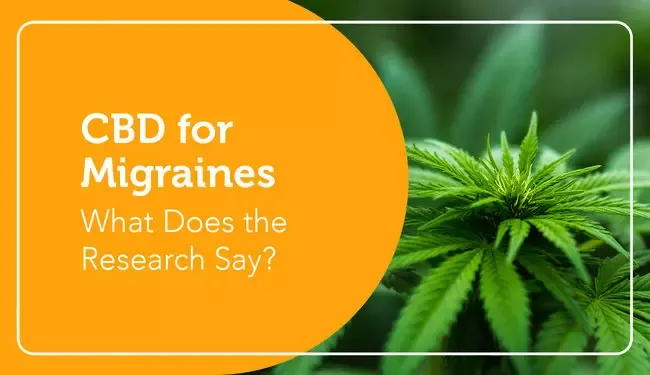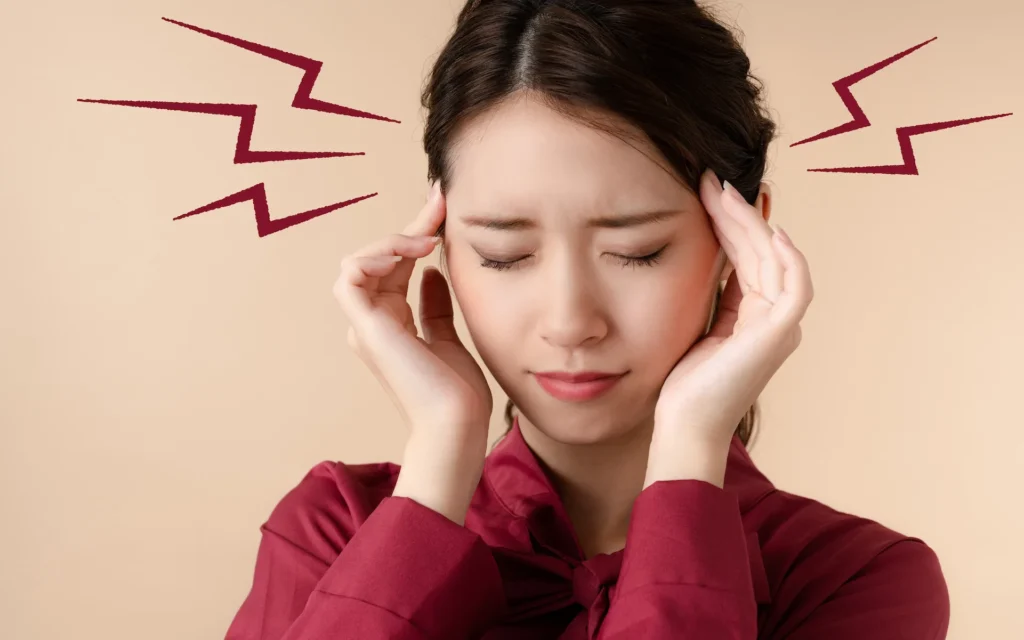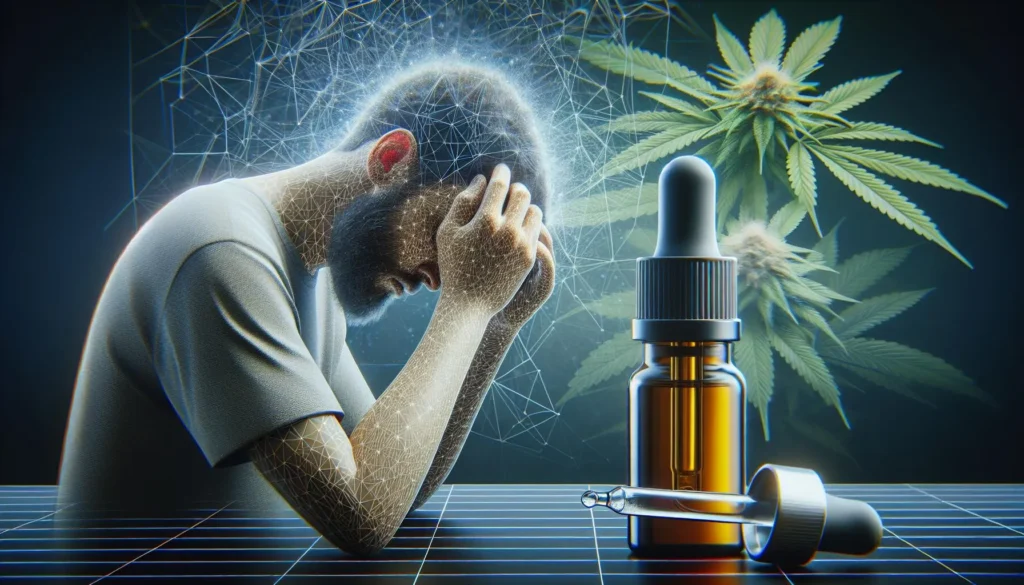Introduction
Migraines are more than just a bad headache—they’re a serious health issue that affects millions of people worldwide. If you’ve ever had one, you know it can bring your entire day to a screeching halt with throbbing pain, nausea, and light sensitivity. Traditional treatments like prescription medications and over-the-counter remedies don’t always hit the mark, leaving many people searching for alternative solutions.
Enter cannabis, a plant that’s been used for centuries for various medicinal purposes. Recently, there’s been a surge in interest around using cannabis for migraine relief. With more states and countries relaxing their laws on cannabis use, it’s becoming a popular topic among those looking for natural ways to ease their migraine symptoms.
But how exactly does cannabis work for migraines? And is there any solid science backing it up? In this article, we’ll dive into the latest research and explore whether cannabis could be the game-changer migraine sufferers have been waiting for. We’ll break down what we know in plain terms, so you can understand the potential benefits, risks, and everything in between. Whether you’re new to cannabis or just curious about its role in migraine relief, this guide aims to give you a clear picture of what the science says and how it might help you find some much-needed relief.
Understanding Migraines
What is a Migraine?
Migraines are not just ordinary headaches. They are a type of severe headache that often causes intense, throbbing pain usually on one side of the head. This pain can be so overwhelming that it affects your ability to perform daily tasks. But that’s not all—migraines can also come with a range of other symptoms like nausea, vomiting, and heightened sensitivity to light and sound. Migraines often go through different stages, starting with early warning signs called “aura.” These can include visual disturbances like flashing lights or even tingling sensations before the main headache begins.

Causes and Triggers
The causes of migraines can be complex and vary from person to person. They are usually triggered by a mix of factors. Common triggers include stress, hormonal changes, certain foods like chocolate and cheese, and even irregular sleep patterns. Identifying these personal triggers is crucial for managing migraines, but pinpointing them can be challenging since different factors may contribute to each migraine episode.
Current Treatments
There are several traditional treatments available for migraines. Over-the-counter medications like ibuprofen or acetaminophen can provide relief for some people. For more severe cases, doctors often prescribe medications known as triptans, which can help alleviate migraine symptoms. However, these treatments don’t work for everyone and can sometimes come with unwanted side effects. This is why many migraine sufferers are exploring alternative treatments, such as cannabis, to find a more effective or natural solution for their pain.
The Science Behind Cannabis and Migraine Relief
Cannabinoids and the Endocannabinoid System
To understand how cannabis might help with migraines, it’s essential to know a bit about cannabinoids and the endocannabinoid system. Cannabinoids are compounds found in cannabis, with THC (tetrahydrocannabinol) and CBD (cannabidiol) being the most well-known. These cannabinoids interact with the body’s endocannabinoid system, a complex network of receptors and neurotransmitters that help regulate various functions, including pain, mood, and inflammation.
The endocannabinoid system plays a role in maintaining balance in the body, known as homeostasis. When cannabinoids from cannabis enter the system, they can influence pain perception and inflammation, which are key factors in migraines. Essentially, cannabinoids might help by modifying how pain is processed and reducing inflammation, potentially offering relief for migraine sufferers.
Research on Cannabis for Migraine Relief
Recent research has started to shine a light on how effective cannabis can be for treating migraines. While the field is still growing, there have been several studies and clinical trials exploring this topic.
Clinical trials have investigated the impact of cannabis on migraines, with some showing promising results. These studies often focus on how cannabis affects the frequency and severity of migraines, as well as its potential to relieve pain. While more research is needed, initial findings suggest that cannabis may help reduce the intensity of migraine attacks and even decrease the number of migraine days per month.
The way cannabis might work for migraines is still being studied. However, it’s believed that cannabinoids can help modulate pain signals and reduce inflammation in the brain. This interaction can potentially lead to fewer and less severe migraine episodes. By influencing the endocannabinoid system, cannabis might offer a new way to manage migraine pain and related symptoms.
Types of Cannabis Products for Migraine Relief
Cannabis Flower
Cannabis flower, often referred to as marijuana or bud, is the most traditional form of cannabis. It’s commonly smoked or vaporized to deliver cannabinoids quickly into the bloodstream. For migraine relief, some people find that smoking or vaping cannabis flower helps them manage their symptoms effectively. The immediate effects can provide quick relief from pain and nausea. However, smoking isn’t ideal for everyone due to its impact on lung health and the potential for short-term side effects like dizziness.
Cannabis Oils and Tinctures
Cannabis oils and tinctures offer a different method of consumption. These products are usually taken sublingually (under the tongue), allowing cannabinoids to enter the bloodstream quickly. Oils and tinctures provide a controlled dosage and can be easier to use for those who prefer not to smoke. They offer the advantage of being more discreet and potentially having longer-lasting effects compared to smoking. This method can be particularly beneficial for managing chronic migraine symptoms.
Edibles
Cannabis edibles are foods or drinks infused with cannabinoids. They come in various forms, including gummies, chocolates, and beverages. Edibles offer a longer-lasting effect compared to smoking or vaping, as they are processed through the digestive system. This means they can provide extended relief, which might be useful for individuals experiencing frequent migraines. However, edibles can take longer to kick in and might lead to delayed or unpredictable effects, making it important to start with a low dose and wait before taking more.
Topicals
Cannabis-infused topicals are products applied directly to the skin, such as creams, balms, or patches. While they are not typically used for migraine relief, some people use them for localized pain or muscle tension that might accompany migraines. Topicals don’t produce a psychoactive effect but can offer targeted relief by delivering cannabinoids to specific areas of the body. They might be a useful addition to a comprehensive migraine management plan, especially for those who experience muscle tightness or discomfort along with their migraines.

Dosage and Administration
Determining the Right Dosage
Finding the right dosage of cannabis for migraine relief can be a bit of a balancing act. Unlike some medications with well-defined dosages, cannabis affects everyone differently. Factors such as your body weight, metabolism, and the severity of your migraines can influence how much cannabis you need. It’s generally recommended to start with a low dose and gradually increase it until you find what works best for you. This approach helps minimize the risk of unwanted side effects while allowing you to gauge the effectiveness of cannabis for your migraine symptoms.
Methods of Administration
There are several ways to consume cannabis, each with its own set of effects and considerations:
Smoking and Vaping: Smoking or vaping cannabis provides rapid relief because cannabinoids enter your bloodstream almost immediately through your lungs. This can be beneficial for acute migraine relief. However, smoking can irritate the lungs, and while vaping is less harsh, it still involves inhaling substances that might not be ideal for everyone.
Edibles: Cannabis edibles, such as gummies or chocolates, offer a longer-lasting effect because they are processed through the digestive system. This extended relief can be advantageous for managing chronic migraine symptoms. However, edibles can take longer to kick in, and it’s easy to consume too much if you’re not careful.
It’s best to start with a small amount and wait to see how it affects you before consuming more.
Oils and Tinctures: These are taken sublingually, or under the tongue, and can offer a quicker onset of effects compared to edibles. Oils and tinctures also allow for more precise dosing, making it easier to find the right amount that works for you without overdoing it.
Topicals: Cannabis-infused topicals, such as creams or balms, are less commonly used for migraines but can be helpful for addressing muscle tension or localized pain that may accompany migraines. They don’t have psychoactive effects, so they won’t alter your mental state, which might be useful for those who prefer to avoid feeling high.
Potential Benefits of Cannabis for Migraine Relief
Pain Management
One of the most talked-about benefits of cannabis for migraine relief is its potential to manage pain. Cannabinoids, the active compounds in cannabis, interact with the body’s endocannabinoid system, which plays a crucial role in regulating pain. By influencing the way pain signals are processed, cannabis may help reduce the severity of migraine pain. Many users report that cannabis can provide significant relief from the throbbing and debilitating pain that often accompanies migraines.
Reduced Inflammation
Inflammation is another key factor in migraines, and cannabis might help with this as well. Cannabinoids have anti-inflammatory properties that can help decrease inflammation in the brain and other parts of the body. Reducing inflammation can potentially lessen the intensity and frequency of migraine attacks. This anti-inflammatory effect could be particularly beneficial for individuals who experience migraines due to inflammatory conditions.
Nausea Relief
Migraines often come with nausea, which can make the experience even more unbearable. Cannabis has been found to have anti-nausea properties, which might provide relief for those who suffer from this symptom. Whether used alone or in combination with other treatments, cannabis might help reduce feelings of nausea and improve overall comfort during a migraine attack.
Improved Sleep
Many people with migraines struggle with disrupted sleep patterns, which can further exacerbate their condition. Cannabis, particularly strains high in CBD, is known for its calming effects and may help improve sleep quality. Better sleep can contribute to fewer migraines and help in managing the condition more effectively. For those who experience migraines that disrupt their sleep, cannabis might offer a way to achieve more restful and uninterrupted sleep.

Risks and Considerations
Side Effects
While cannabis can offer relief for migraines, it’s important to be aware of potential side effects. Common side effects include dry mouth, dizziness, and changes in appetite. Some people may also experience temporary cognitive impairments, such as difficulties with memory or concentration. These effects can vary depending on the strain and method of consumption. It’s important to start with a low dose and monitor how cannabis affects you to minimize these side effects.
Legal and Regulatory Issues
Cannabis laws and regulations can vary significantly depending on where you live. In some places, cannabis is fully legal for medical and recreational use, while in others, it may only be available for medical purposes or remain completely illegal. Before using cannabis for migraine relief, it’s crucial to understand the legal status in your area and ensure you are complying with local regulations. This can help avoid legal issues and ensure that you are using cannabis safely and responsibly.
Interaction with Other Medications
Cannabis can interact with other medications you might be taking, which could affect their efficacy or increase the risk of side effects. If you are on other medications, particularly those used to treat migraines or other chronic conditions, consult with a healthcare professional before incorporating cannabis into your regimen. They can help you understand any potential interactions and adjust your treatment plan as needed.

Individual Variability
Cannabis affects everyone differently, and what works for one person might not work for another. Factors such as individual physiology, the type of migraine, and personal preferences all play a role in how effective cannabis might be for you. It’s important to approach cannabis use with an open mind and be prepared to experiment with different strains and dosages to find what works best for your specific needs.
Conclusion and Future Directions
Summary of Current Understanding
Cannabis has emerged as a potential alternative treatment for migraines, offering various benefits such as pain management, reduced inflammation, nausea relief, and improved sleep. The active compounds in cannabis, particularly THC and CBD, interact with the body’s endocannabinoid system, which can help alleviate some of the symptoms associated with migraines. While initial research and anecdotal evidence suggest that cannabis may provide relief for many individuals, it is important to approach this treatment option with a clear understanding of its benefits and limitations.
Need for Further Research
Despite the promising results, there is still much to learn about the efficacy and safety of cannabis for migraine relief. Current research is ongoing, and more studies are needed to fully understand how cannabis works for migraines, the optimal dosages, and the best methods of administration. As research continues to evolve, it will provide clearer guidelines and more robust evidence to support the use of cannabis in migraine treatment. Until then, staying informed about new findings and consulting with healthcare professionals can help you make the best choices for managing your migraines.
Personalizing Treatment
Every individual’s experience with migraines and cannabis is unique. What works for one person might not work for another, so finding the right approach may involve some trial and error. It’s important to start with a low dose, monitor your response, and adjust as needed. Consulting with a healthcare provider knowledgeable about cannabis can provide valuable insights and help tailor a treatment plan to your specific needs.

